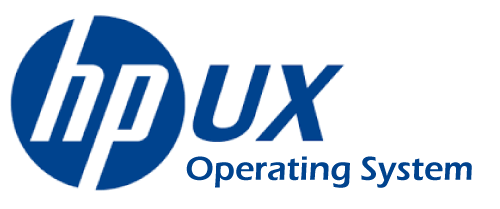HP-UX Operating SystemIn this article, you will learn about the HP-UX operating system's history, characteristics, hardware platform, security, and features. What is HP-UX Operating System?
HP-UX is Hewlett Packard Enterprise's proprietary implementation of UNIX OS. It was first launched in 1984 and is based on Unix System V (formerly System III). It is a pure server OS with flexible memory, high availability, and security management. The latest versions of HP-UNIX OS support HPE Integrity Servers that are based on Intel's Itanium architecture. Previous versions of the HP-UNIX operating system supported the HP Integral systems and the HP 9000 Series 200, 300, and 400 systems powered by Motorola 68000 CPUs. HP's proprietary FOCUS architecture powered the HP 9000 Series 500 computers, and later HP 9000 Series models were powered by HP's PA-RISC instruction set architecture. As an alternative to the standard UNIX permissions system, HP-UNIX OS was the first UNIX to contain access control lists for file access permissions. HP-UX OS was also one of the first UNIX systems to include an inbuilt logical volume manager. HP has worked with Veritas Software for a long time and employs VxFS as its primary file system. HP-UX comes with several tools for monitoring (costs, workload) and logging and visualization that may be used in enterprises. There's also an Enterprise Edition with resource management and a Mission Critical Edition for enterprises with mission-critical applications that require the highest level of availability and security. It includes a host intrusion detection system (H-IDS). It is also used for web servers, content servers, dedicated servers, databases, or cluster systems. History of HP-UX Operating SystemHP-UNIX Packard's (HP-UX) operating system was based on System V release 3. The system was initially only available on the PA-RISC HP 9000 platform. HP-UX OS released its initial version in 1984. The HP-UNIX operating system version 9 released System Administration Manager. It is a character-based graphical user interface (GUI) from which the system can be administered. The HP-UX OS version 10 was released in 1995, with various improvements to the system file and directory structure, making it comparable to AT&T SVR4. The HP-UX OS version 11 was released in 1997. It was the first HP launch to support 64-bit addressing was this one. However, when HP developed operating environments and bundled sets of layered software for specific Information Technology goals in 2000, this release was renamed 11i. The HP-UX OS version 11.20 was released in 2001 and included support for Itanium systems. The HP-UX was one of the first UNIX systems to use ACLs (Access Control Lists) for file permissions and to include built-in support for Logical Volume Manager. The HP-UX currently uses Veritas as its main file system because of the cooperation between Veritas and HP. The HP-UX has been updated to version 11iv3, update 4. Characteristics of HP-UX Operating SystemThe HP-UNIX operating system 11i offers a shared drive for its CFS (clustered file system). HP Service guard is the HP-UX cluster solution. HP Global Workload Management optimizes workloads and connects with Instant Capacity on Demand, allowing installed resources to be paid for in 30-minute intervals for peak workload demands. HP-UNIX OS supports operating system-level virtualization through hardware partitions, such as HP Integrity Virtual Machines (HPVM) and isolated OS virtual partitions on cell-based servers on all Integrity servers. HPVM may run guests on hosts running Linux, OpenVMS, Windows Server, or HP-UX 11i v3. HP-UX OS supports online VM guest migration, encrypting guest contents during migration. Hardware Platforms of HP-UX Operating SystemThe HP-UX operating system is compatible with a wide range of PA-RISC computers. The HP-UX OS version 11.0 provided integrity-based servers support, moving from PA-RISC to Itanium. The first version of HP-UX 11i v1.5 to support Itanium was HP-UX 11i v1.5. HP-UX 11i v2 was the first operating system to support both of these architectures. 1. BL Series The HP-UNIX OS version 11i supports HPE Integrity Servers of the HP BL server blade family. The Intel Itanium architecture is used in these servers. 2. CX Series HP-UX 11i v2 and 11i v3 support HP's CX series servers. CX refers to carrier-grade and is mainly utilized in the telco business. Both of these systems have Itanium Mad6M processors that are discontinued. 3. RX Series The HP-UX operating system supports the HP's RX series of servers. Security in HP-UX Operating SystemThe HP-UX OS version 11i v2 release added kernel-based intrusion detection, security partitioning, role-based access control, strong random number generation, stack buffer overflow protection, and a number of open-source security utilities. HP splits the security elements of the OS into main three categories: data, system, and identity: 1. Data It includes encrypted Volumes and File Systems, containers, Trusted Computing, IPsec, etc. 2. System It includes Software Assistant, Bastille, Standard Mode Security Extensions, Auditing System, IPFilter, Host IDS, etc. 3. Identity It includes RBAC, Kerberos server, AAA server, PAM-Kerberos, etc. Context dependent filesContext-dependent files (CDF) technology was launched in Release 6.x (together with 3.x), enabling a fileserver to offer various settings, binaries, and even architectures to various client workstations in a heterogeneous environment. A directory including such files had its suid bit set, making it invisible to both normal and root processes. Intruders have used such a strategy to conceal malicious programs or data. With release 10.0, CDFs and the CDF filesystem were deprecated. Features of HP-UX Operating SystemThere are various features of the HP-UX operating system. Some features of the HP-UX operating system are as follows:
Next TopicTizen Operating System
|
 For Videos Join Our Youtube Channel: Join Now
For Videos Join Our Youtube Channel: Join Now
Feedback
- Send your Feedback to [email protected]
Help Others, Please Share










